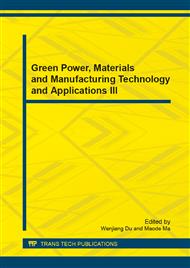p.634
p.639
p.644
p.650
p.655
p.660
p.665
p.671
p.677
Three-Phase Power Flow of Less Ring Distribution Network
Abstract:
In the planning and operation of distribution network, flow calculation and optimal flow is the hot issue for many experts and scholars to study. In network reconfiguration, service restoration and capacitor configuration, it needs hundreds even thousands times of power flow calculation. So it is very important to propose a suitable optimization algorithm. Based on the three-phase model we proposed hybrid particle swarm algorithm to calculate the three-phase power flow. The method uses the superposition principle. The distribution network is divided into two network models, one is the pure radial network without cyclic structure, and another is the pure cyclic network without radiation structure. We do iterative calculation respectively using hybrid particle algorithm, getting the calculation results. The hybrid algorithm is a new reference for the future optimization of power flow calculation in this paper.
Info:
Periodical:
Pages:
655-659
Citation:
Online since:
January 2014
Authors:
Price:
Сopyright:
© 2014 Trans Tech Publications Ltd. All Rights Reserved
Share:
Citation:


